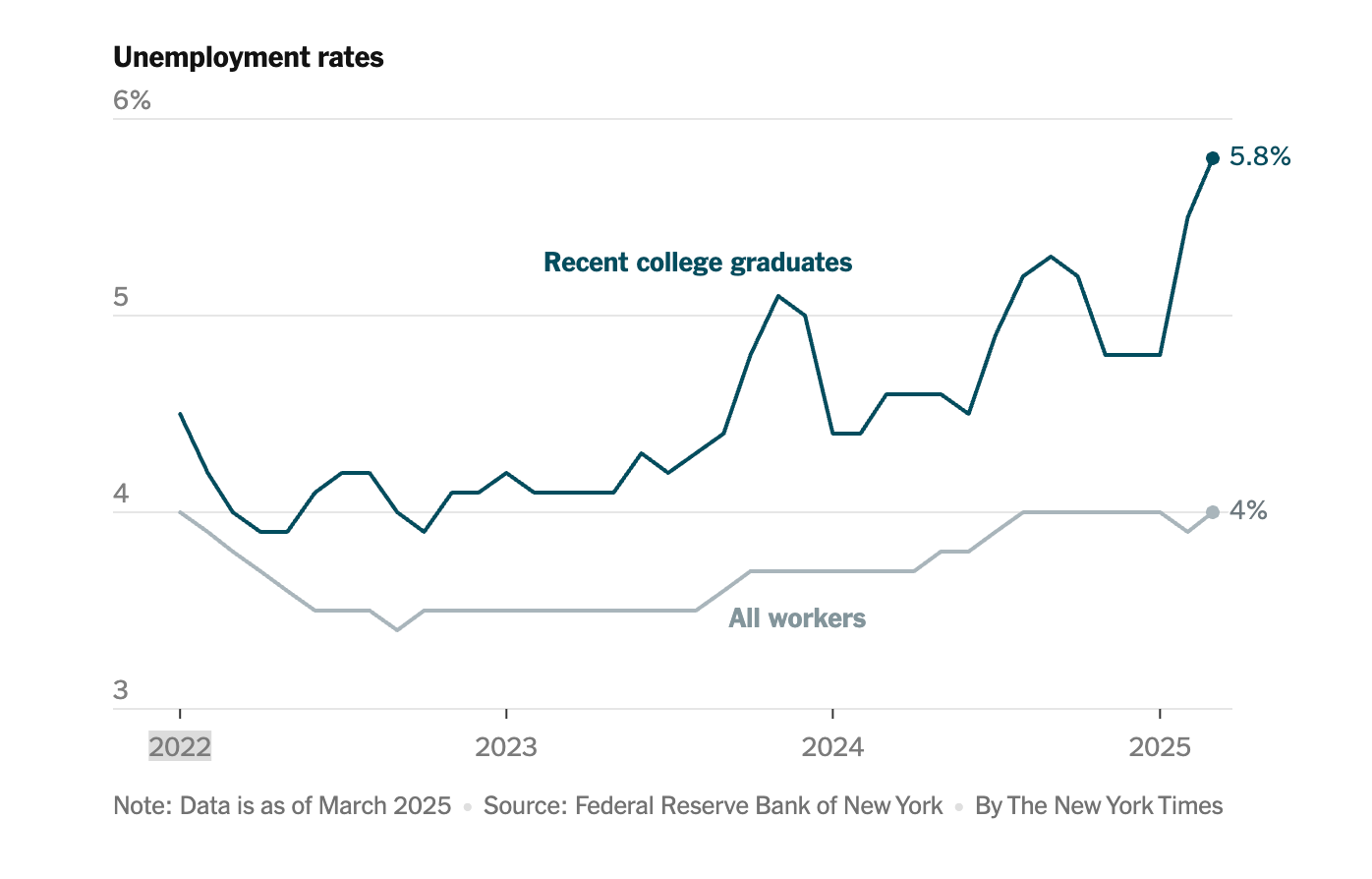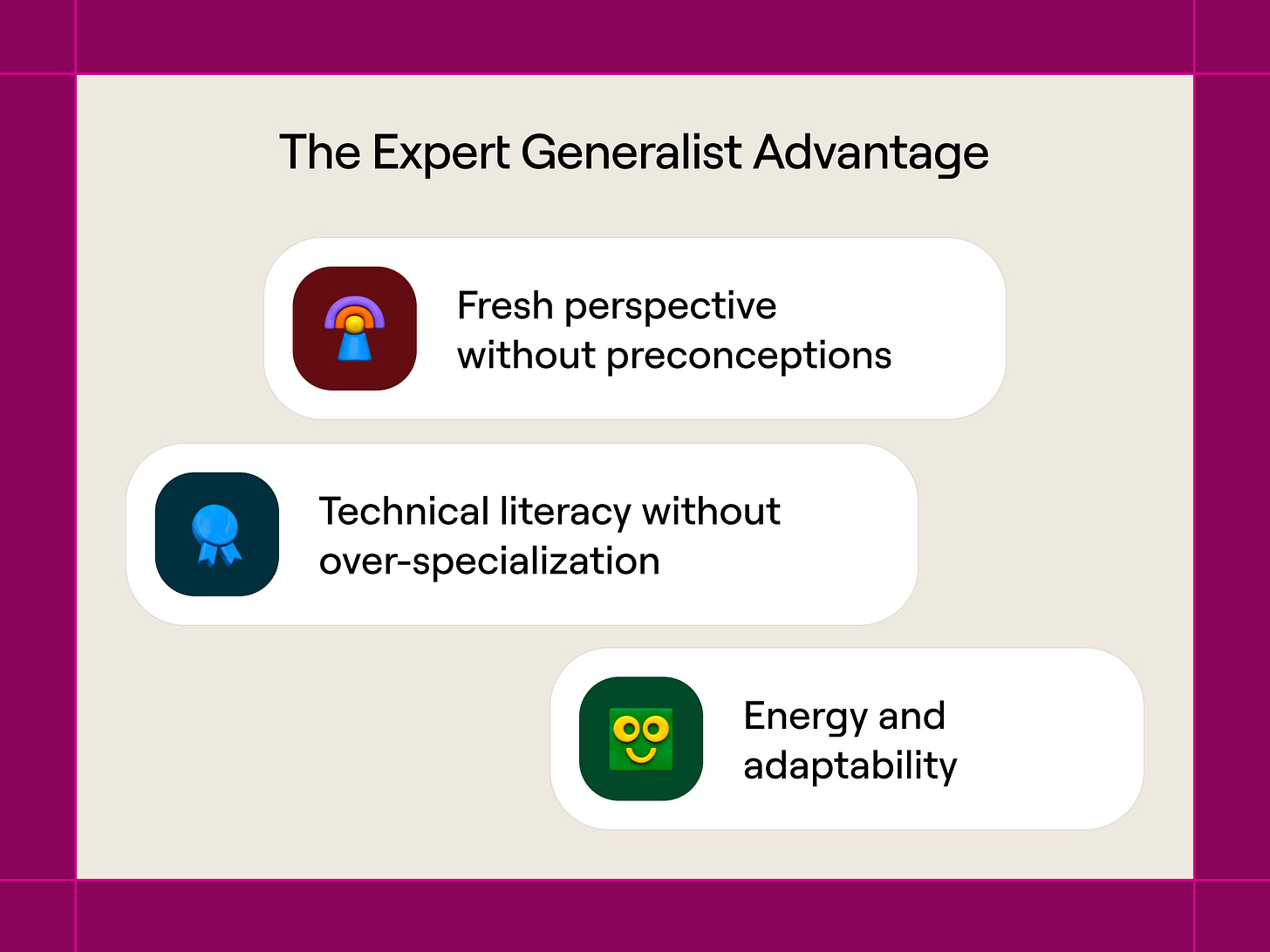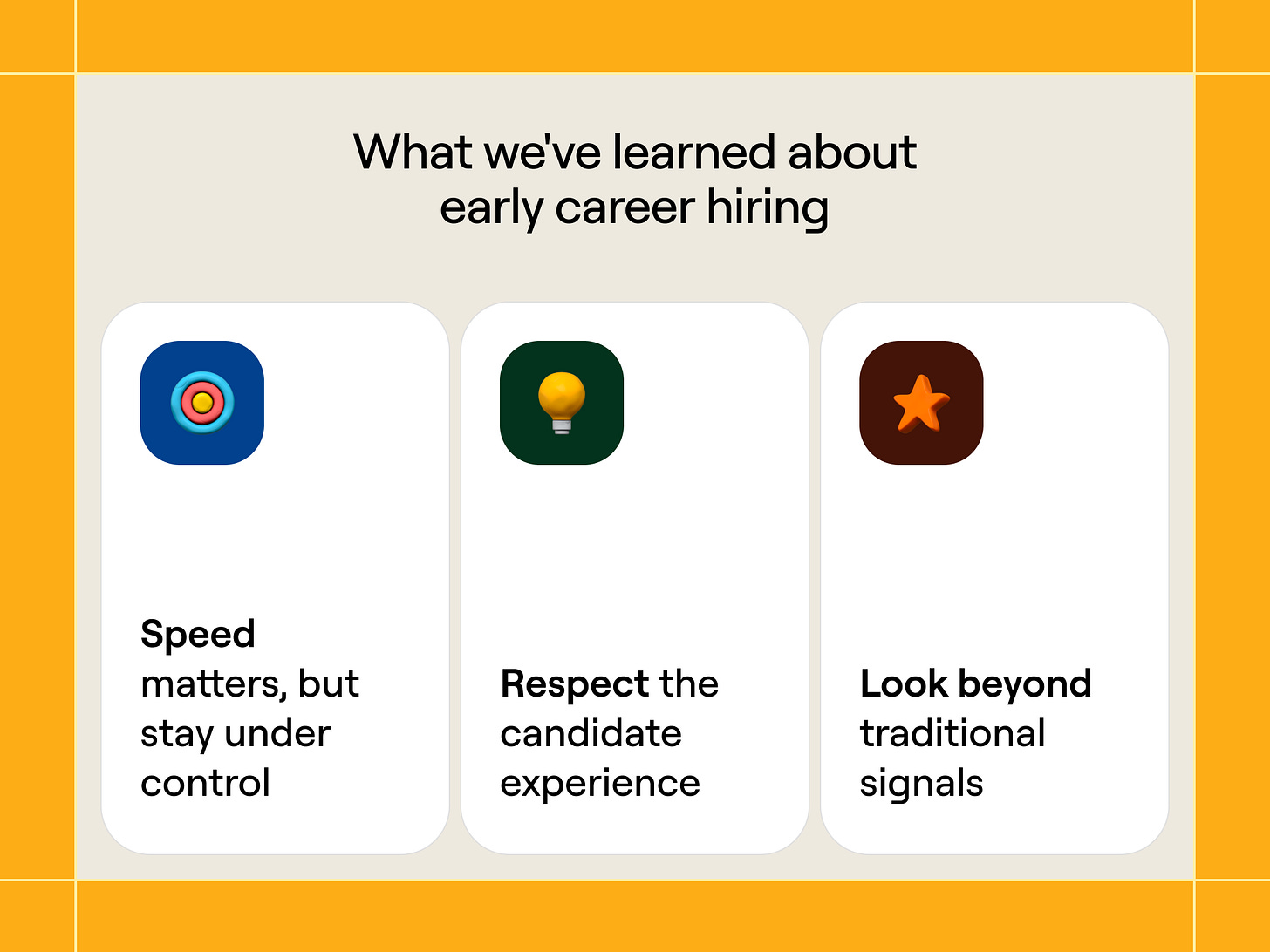How to do early career hiring the right way
Lessons from our early career program The Wheel
Most tech companies are overlooking an incredible talent pool of people who are just starting their careers. We knew we didn’t want to make the same mistake, so we decided to build early career hiring into Clay’s talent strategy and create a rotational program that would help those just starting out find their footing. We call it “The Wheel”—and the results have been remarkable.
TL;DR
Expert generalists beat narrow specialists in an AI-driven world—fresh grads bring technical literacy without over-specialization
Speed and respect matter in hiring—compressed timelines and responsive communication create massive competitive advantages when most companies ghost candidates
Early career candidates are an under-appreciated resource—most tech companies avoid early career hiring while qualified graduates struggle to find positions
Look for cross-functional thinking—focus on candidates who can work across business functions rather than single-skill specialists
Start small and iterate—test with minimal investment using simple tools (TypeForm + Clay) before building formal processes
The problem: a mismatch in the market
The job market data tells a stark story. Recent graduates are facing one of the toughest job markets in years, with the New York Times highlighting the struggle to find entry-level positions in tech. Meanwhile, companies are hesitant to hire new grads, particularly those with computer science backgrounds who they worry might be displaced by AI.
What that means is that a whole lot of great talent is being left out in the cold, which is a massive opportunity for forward-looking companies to recruit early career professionals. We’ve written a lot about finding GTM alpha; we thought of this as finding talent alpha.
A rotational program that works
The Wheel didn’t start as a grand strategic initiative. It evolved organically from what we were seeing on our support team. We had five to seven people handling customer support, but everyone was also working on side projects across different parts of the business. Support team members were becoming the go-to experts for various initiatives because they understood our product deeply and knew our customers intimately.
We realized we had accidentally created expert generalists: people who could speak multiple business languages while maintaining deep customer knowledge. When we noticed that several high-performing new graduates naturally thrived in this environment, we decided to formalize it into a rotational program.
The scrappy launch: $600 and a TypeForm
Our first run at turning the Wheel into an early career program was beautifully low-tech. We showed up to an NYU career fair with 50 one-pagers, expecting modest interest. Instead, we had a line at our table for the entire four-hour event.
It turned out we were the only tech company there. While other companies were fighting over the same pool of experienced candidates, we had found an untapped market of eager, talented people.
Our entire initial investment was approximately $600 for the career fair booth plus food for our rapid-fire interview day. We bypassed our formal applicant tracking system entirely, running everything through a TypeForm that fed into Clay. If it failed, we’d lose almost nothing. If it succeeded, we’d learn something valuable.
It succeeded. We received over 300 applications and hired our first cohort of seven people.
The Expert Generalist Advantage
Here’s what we’ve learned about why early career hires are particularly valuable in an AI-driven world:
Fresh perspective without preconceptions. New graduates come in without years of “this is how we’ve always done things” thinking. In a rapidly evolving AI landscape, this flexibility is invaluable.
Technical literacy without over-specialization. We like to say that the modern computer science graduate knows “enough to be dangerous.” They can speak the language of engineering but don’t need to be pigeonholed as coders. This positions them perfectly for roles that require cross-functional collaboration.
Energy and adaptability. The enthusiasm level of early career hires operates on a different level entirely. They’re excited to learn, quick to adapt, and eager to contribute across multiple areas.
How The Wheel works in practice
Every “Wheelie” gets a consistent diet of customer-facing support work as well as three-month rotations across different business functions. Participants might spend time with our Chief of Staff, work on marketing initiatives, or dive into the sales process—all while maintaining their support responsibilities.
This creates a dual benefit: Wheelies get exposure to various parts of the business and discover their strengths and interests, while different teams get fresh perspectives and dedicated project support from intelligent, motivated contributors.
As current Wheelie Natalie Ho said, “This position was really special because you get to see other parts of the company while still using your technical brain in support. It’s the best of both worlds.” Here’s a little home movie featuring a recent Wheelie class:
What we’ve learned about early career hiring
Our experiment with the Wheel taught a few things about how to early career hiring the right way. Three big themes stuck out:
Speed matters, but stay under control. We compressed our hiring timeline not just for efficiency, but to create an exciting candidate experience. Flying people in for an interview day made the process feel special and helped candidates understand our culture firsthand.
Respect the candidate experience. In a market where ghosting has become normalized, responsive communication and clear next steps create significant competitive advantages. Timely communication and actionable feedback differentiate exceptional hiring processes from the industry standard.
Look beyond traditional signals. We’ve added a “show and tell” component to our interviews where candidates demonstrate something cool they’ve built—whether it’s a Notion template, an automation, or a side project. This gives people flexibility to showcase their skills in ways that resonate with them.
Going from experiment to hiring engine
After proving the concept, we’re now systematizing what started as a scrappy experiment. We’re moving from TypeForm and Clay to our proper applicant tracking system, bringing in dedicated recruiting resources, and building detailed documentation for rotation leads.
The goal is to create a repeatable cycle with a hiring loop that brings in new cohorts every month and a half, with clear expectations and processes for both participants and rotation leads. (We’re also constantly measuring the effectiveness of these cycles, and seeing if we need to shorten or lengthen them.)
We’re not the only company that could benefit from this approach. The current market dynamics create a perfect storm of opportunity:
Abundant talent: Qualified new graduates are struggling to find positions
Overlooked demographic: Most tech companies aren’t actively recruiting this population
AI-driven skills evolution: The value is shifting from pure technical skills to technical literacy combined with business acumen
If you’re considering early career hiring, here’s what we’d recommend:
Start small and scrappy. You don’t need a massive budget or perfect processes. Test the waters with a minimal viable approach and iterate based on what you learn.
Focus on generalists, not specialists. Look for people who can think across functions rather than those who are narrowly focused on a single skill that might be disrupted by AI.
Create genuine rotation opportunities. Give participants meaningful projects that benefit both their development and your business objectives. Effective rotations involve real work with measurable impact across different functions.
Invest in the candidate experience. In a market where respect for candidates isn’t a given, exceptional treatment becomes a massive differentiator.
The future belongs to companies that can identify and develop talent that others are overlooking. For us, that means betting big on the combination of fresh perspectives, technical literacy, and expert generalism that early career hires bring to the table. And sometimes, the best strategic decisions start with just $600 and a willingness to try something different.
Interesting in learning more about The Wheel or applying? Learn more about the program here.
Special thanks to Natalie Ho and George Dilthey for their expert guidance and input for this piece.






